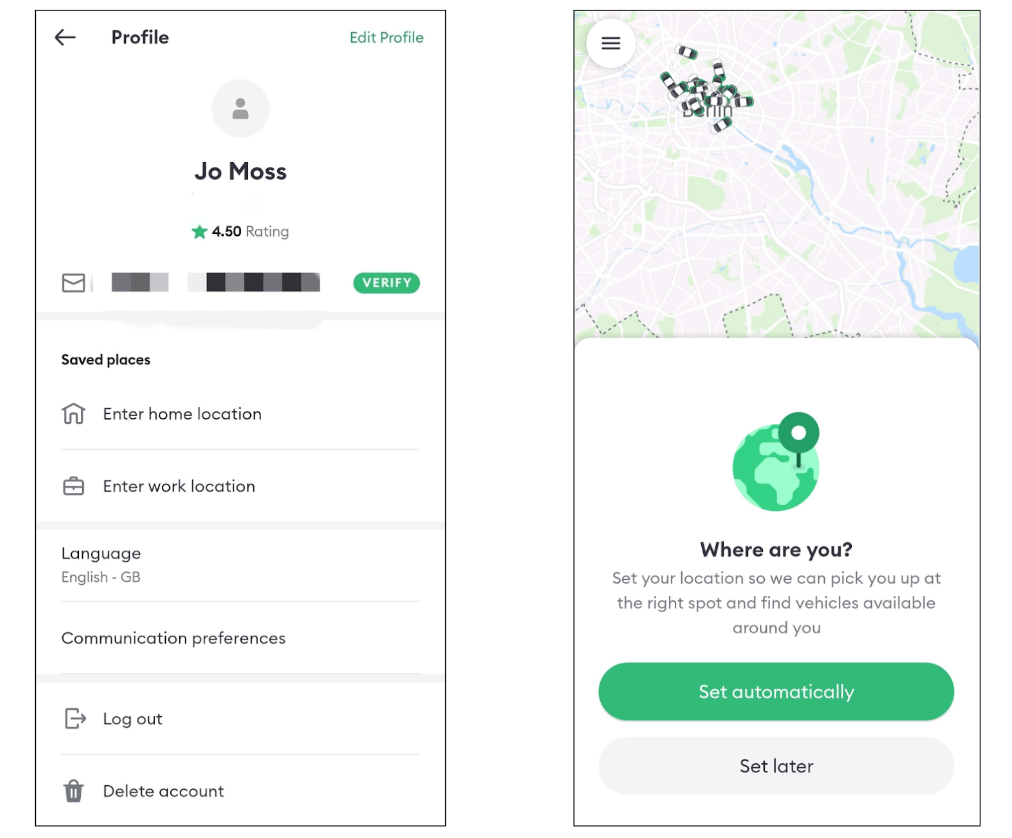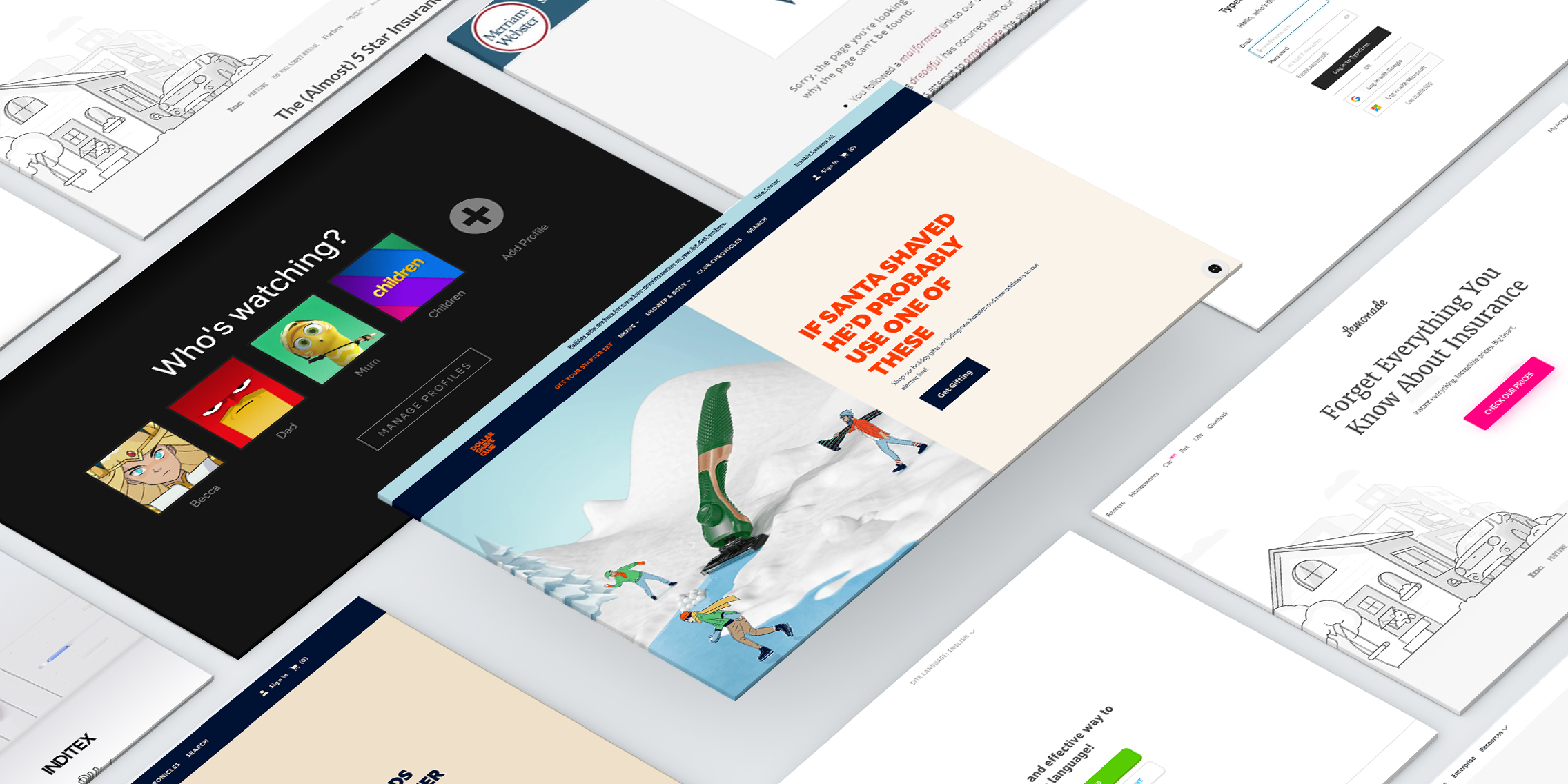A user experience (UX) writer, also known as a content designer, plans and designs the messaging that features throughout a product.
Consider all the copy you encounter as you navigate a mobile app; the instructions that guide you, the text on buttons and menu items, and the error messages that pop up when you go wrong. They’ve all been carefully crafted by a UX writer.
UX writing (also known as content designing) aims to guide the user and optimise their experience with the product. UX writers possess a unique combination of UX knowledge and interface writing skills—not to mention a strong set of soft skills.
So what exactly does a UX writer do? What are their main tasks and responsibilities, and how do they differ from other professional copywriters? Let’s explore one of design’s most coveted job titles.
Here’s what we’ll cover:
First things first: What is UX writing?
What is UX writing?
Every day, we use dozens of apps, websites, and software for different tasks. You might use a food delivery app to order takeaway, or idly scroll through LinkedIn if you’ve got five minutes to spare. You might use a banking app to check your balance or glance at your Fitbit to see the stats from your last workout.
All of these digital products contain what’s known as microcopy—carefully crafted messages that guide you through the interface. This microcopy is planned and written by UX writers.
Take the example of the BetterHelp online therapy platform. The “get started” screen is designed to help the user find a suitable therapist.
Every piece of text on the page has been written to guide the user through the process. It provides instructions for what the user should do next (complete the questionnaire) and explains why this is necessary. Then, each available option has a brief description summarising what that option represents.
Source:BetterHelp app
Without this well-written copy, the process could quickly become complicated, confusing, and overwhelming. But, because the UX writer has designed the messaging to be clear, accessible, and straightforward, the user can comfortably move through the process of finding a therapist. That’s the power of UX writing!
What does a UX writer do?
A UX writer is an integral member of the design team. Just as a UX designer designs the architecture of a product, a UX writer designs all the words (the microcopy) that feature throughout the user experience.
Their ultimate goal is to write copy that helps the user find their way around the product and complete their desired tasks. This includes things like CTA button copy, menu labels, error messages, form text, and goal completion messages—anything that guides, informs, supports, affirms, or engages the user as they interact with a digital product.
Microcopy in the Bolt taxi hailing app
But writing microcopy is just one piece of the puzzle. UX writers are also involved in conducting research, running tests and experiments, and maintaining documentation and style guides. In some cases, UX writers may also be involved in shaping the overall content strategy for the product.
We’ll take a closer look at what a UX writer does when we explore the UX writing process and the day-to-day tasks associated with the role. But first, let’s clear up a common source of confusion: the difference between UX writers, content designers, and copywriters.
What’s the difference between a UX writer, a content designer, and a copywriter?
What’s the difference between a UX writer and a content designer?
It depends who you ask! UX writing and content design are, relatively speaking, still rather new disciplines. There’s some inconsistency within the industry in terms of how the two roles are defined.
Many use the two job titles interchangeably. And, when you consider the goals, tasks, and responsibilities of both UX writers and content designers, you’ll find that they are mostly synonymous. Ultimately, both UX writers and content designers are responsible for optimising the user experience through words and messaging.
However, it’s important to be aware that some draw a key distinction between the two, defining UX writers as those who actually write the microcopy, and content designers as those who manage the strategy and processes that drive the content design team. Through that lens, content designers are concerned with the bigger picture while UX writers zoom in on the finer linguistic details.
The debate is still ongoing! UX writer and designer Chinwe Uzegbu argues that, at the end of the day, UX writing and content design are the same thing, as does Aaron Raizen writing for UX Writing Hub. And, ultimately, whether you call it UX writing, content design, or something else entirely, it’s all just semantics…the skills, requirements, tasks, and responsibilities of the role won’t vary all that much (if at all).
What’s the difference between a UX writer/content designer and a copywriter?
This one’s much more clear-cut. UX writers and content designers fulfil a very different role from traditional copywriters.
UX writers are part of the design team; copywriters belong in marketing. UX writers craft copy for the product interface and any other touchpoints that make up the user experience; copywriters write text for marketing and advertising materials (think website landing page copy, blog articles, social media captions, and email newsletters).
For UX writers and content designers, the goal is to optimise and enhance the user experience; to guide and support the user as they navigate through a website, app, or software. For copywriters, the main goal is to attract new customers and/or persuade them to ‘convert’—to sign up, subscribe, or make a purchase.
You can learn more about the (many) differences between the two in this guide: What’s the difference between UX writing and copywriting? (With examples).
What are the day-to-day tasks and responsibilities of a UX writer?
Now we know what a UX writer is (and isn’t), let’s explore the role in more detail. We combed through live job ads to identify the UX writer’s main tasks and responsibilities. Here they are in a nutshell:
- Building cross-functional relationships with partners across product, marketing, UX design, and research to define copy requirements and strategies to achieve business goals.
- Working collaboratively in all design phases with UX designers, researchers, developers, accessibility specialists, and product partners as required by each project.
- Developing consistent nomenclature and terminology to be used throughout the product, and ensuring the language used is meaningful and accessible to the end user.
- Using data and metrics to influence decisions and to measure progress.
- Creating scalable content templates, patterns, and frameworks.
- Writing, editing, and maintaining microcopy and product documentation to deliver a strong user experience.
- Participating in or leading content design strategy efforts, such as running content audits.
- Contributing to a voice and tone guide to ensure consistency across the entire user experience.
- Reviewing UX deliverables and providing feedback.
As you can see, the UX writer role is highly collaborative and hands-on. UX writers divide their time between cross-functional meetings and workshops, conducting research to better understand their end users’ needs, and collaborating with UX and UI designers on the production of wireframes and prototypes.
Of course, a large portion of their work involves carefully crafting microcopy for different product touchpoints and maintaining documentation and style guides. They’re responsible not only for the individual words that feature in a product, but also for shaping the overall tone, style, and voice that’s associated with the product and the brand at large.
Depending on the size and setup of the team, UX writers may also find themselves reviewing the work of other UX writers and content designers, providing feedback and making suggestions.
Last but not least, UX writers are fearless of data and analytics. They’re often required to track how their copy performs in relation to the user’s goals, looking out for points of friction that can be removed, improved, and fine-tuned with the help of good copy.
What process does a UX writer follow?
You might assume that UX writers step in at the end of the design process—taking the UX designers’ polished prototypes, replacing ‘lorem ipsum’ with proper copy, and calling it a day.
In reality, UX writers are heavily involved throughout the design process.
UX writing isn’t simply an afterthought or a final flourish; it’s designed right into the product from the beginning. In fact, many UX experts advocate for designing with words first, letting the content shape the design rather than the other way around. If you’re curious about what it means to ‘design with words first’, check out this interview with Lara Tacito, Senior Director of UX at HubSpot.
But back to the topic of what a UX writer does and where they fit into the UX process: here are the steps a UX writer typically follows when collaborating on a design project.
1. Scope out the project and conduct research
Before any UX writing can be done, the UX writer must first scope out the project. The goal is to understand the target audience (who am I writing for?) as well as the context (what parts of the user journey am I writing for?)
This stage may involve:
- Conducting user research or drawing upon research insights gathered by UX designers and/or UX researchers
- Conducting competitor research to understand industry standards or best practices in relation to the product copy
- Defining clear goals for the content
- Referring to style guides and documentation to inform content design choices
2. Ideate and draft
Next, the UX writer starts to brainstorm with words. They come up with different drafts and versions, experimenting until they land on what feels like the best solution. They might brainstorm in a Google Doc first, or they might work directly in context—for example, typing copy straight into a product wireframe.
Here’s how this step might play out:
- Work together with UX and UI designers to understand the user flow and develop wireframes
- Come up with many different versions of copy for each touchpoint
- Gather feedback and iterate
- Narrow it down to one or two versions
3. Prototype and test
As the copy starts to take shape, it’s time to prototype and test it. This helps to iron out any issues, identify areas where the copy can be improved, and generally test how well the copy works to support and facilitate the user’s journey through the product.
This step might involve:
- Combining polished copy ideas with near-final prototypes to move the overall design forward
- Working with UX/UI designers to make final tweaks
- Testing on real users to get feedback and make improvements
4. Oversee continuous testing and iteration
Once the copy is live—be it in the context of a brand new product, or an addition or update to an existing product—the UX writer will monitor its performance and iterate accordingly.
They might run A/B tests to compare different versions of the copy, gather user feedback at regular intervals, and track key performance indicators to make sure the copy is fulfilling its purpose.
If data shows that users take longer than usual to fill out a form, for example, the UX writer might adjust the copy in order to make the process clearer and more straightforward. Just as UX designers continuously seek to optimise the product’s layout and functionality, UX writers are responsible for evolving and improving the product copy over time.
5. Create/update documentation and style guides
Throughout the process, the UX writer will create or update any relevant content design documentation. This might include naming conventions and terminology, replicable processes and frameworks, as well as style guidelines around voice and tone. Keeping on top of documentation ensures consistency and cohesion—an essential content design principle, and a fundamental pillar of good UX.
What skills and qualifications does a UX writer need?
The most important UX writer skills
If you want to become a UX writer, you’ll need a combination of technical skills, soft skills, and a knack for writing. The most successful UX writers possess the following:
- Exceptional communication and collaboration skills
- Strong research and analysis skills
- A gift for crafting concise, user-friendly microcopy
- A deep understanding of user experience design, including the key principles, methodologies, and processes
- Proficiency in UX design tools such as Figma, Sketch, and Adobe XD
- Knowledge of user and usability testing
- The ability to give and receive constructive feedback
- An understanding of content strategy and how it relates to both user and business goals
- Meticulous attention to detail
- A deep understanding of accessibility and inclusivity in content design.
UX writer qualifications
You don’t need a specific degree or qualification to become a UX writer. Because it’s a relatively new discipline, there’s no single pathway carved out for the role—UX writers come from all different fields and backgrounds. But, if you want to master the essential skills and show employers that you’re qualified for content design roles, a qualification will set you in good stead.
If you’re already well-versed in UX design, you can start your transition into UX writing with a specialist qualification such as the Professional Certificate in Content Design offered by The UX Design Institute. This 10-week part-time course covers all the essentials—from the principles of content design to voice, tone, and style, through to testing content and leveraging AI throughout the content design process.
If you’re brand new to both UX writing and UX design, you’ll want to start with a UX design qualification. A reputable UX course will give you a solid grounding in fundamental UX principles, user research and analysis, information architecture, prototyping, and more—setting the stage for you to upskill into UX writing.
How much can a UX writer make?
Last but not least, we come to the question of salary. If you’re considering a career as a UX writer, you’ll want to know how much money you can make.
There are many factors that influence your earning potential: location, years of experience, the type and size of the company, and even the quality of your UX writing portfolio. Still, we can turn to average salary data to get a ballpark figure.
Here’s a breakdown of the average UX writer salary in different locations:
- In the United States, the average UX writer salary is $125,502 per year (Talent.com)
- In Canada, the average UX writer salary is $84,416 per year (Glassdoor)
- In Australia, the average UX writer salary is AU$159,665 per year (Economic Research Institute)
- In Ireland, the average UX writer salary ranges between €40,000 and 60,000 per year depending on experience (Prosperity.ie)
- In the UK, the average UX writer salary is £52,555 per year (Glassdoor)
You’ll find a more in-depth exploration of UX writer salaries in this post.
Learn more about UX writing and content design
We hope you’ve enjoyed learning about what a UX writer does and what it takes to get started in the field. If you’d like to learn more about UX writing and content design, we can recommend the following:
- The future of UX writing and content design: 5 major trends
- The 6 best AI tools for content design
- 10 UX writing examples to inspire you







